This Game. The Characters. The Story. THE FEELS.












This game. The characters. The story. THE FEELS.
Prepare to Cry Trailer
More Posts from Watchmewatchyouwatchme and Others
Neil is my hero

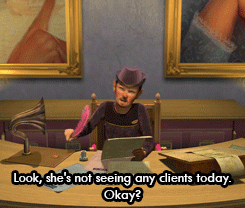

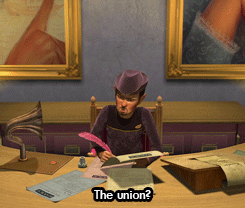
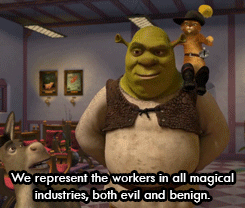
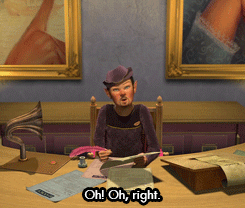
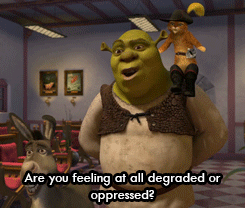
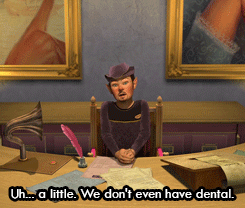
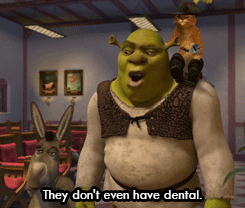
How to Plot Your Story Using the But/Therefore Method
Here’s another sneak peak from my forthcoming book The Complete Guide to Self-Editing for Fiction Writers!
The but/therefore method* is an easy way to create your plot and test the cause-effect connections between your plot and character motivation.
If you don’t have a plot yet, it can help you create one. If you already have one, the method almost always reveals gaps that need to be addressed with new or stronger chapters/scenes. (For help with your character motivation, check out the PDF “Creating Character Arcs” in my Free Resource Library.)
Use this template for each scene or chapter:
[Main character] wants ______, but _______, therefore ______.
In the first blank, put the motivation for that chapter or scene.
In the second blank, the conflict or obstacle.
In the third blank, the result or action the character takes, which leads into the next goal, and so on, and so on.
Chapter-by-chapter it might look something like this:
Chapter 1: Julian wants to ask Matt to the dance, but he’s scared of being rejected, therefore he slips a cryptic note into Matt’s locker.
Chapter 2: Matt doesn’t see the note. Now Julian wants to get into his locker and retrieve it, but the principal sees him trying to jimmy open the lock, therefore Julian is given detention for a week.
You can also do this scene-by-scene. My suggestion would be to start with the chapter outline, see what it reveals, then move into the scenes. If you’ve already written a draft, you can outline your draft using the template, which should reveal holes in character motivation, plot, and cause/effect, all with one fell swoop!
Hope this helps!
*I adapted this method from South Park writer Trey Parker, who first introduced it in the documentary Six Days to Air.
//////////////
The Literary Architect is a writing advice blog run by me, Bucket Siler. For more writing help, check out my Free Resource Library, peruse my post guide, or hire me to edit your novel or short story.
The Complete Guide to Self-Editing for Fiction Writers will be available for purchase soon. Follow the link if you want to be notified when it is released. xoxo
Narrating Combat in D&D
Combat descriptions are always difficult to come up with on the fly. Here is a guide with some tips and tricks to make your combat more interesting and dramatic!

image credit: Michael Komarck
Hit Points
When a creature or player gets hit by an attack, think about the situation surrounding the attack. Has the creature already taken damage? Figure out how much damage is being dealt before describing the attack. Is it a lot of damage or a little? How tough is the defender? is it merely a pinprick to them or a grievous wound? No matter how you slice it, hits always come back to one thing: Hit Points.
So something important that you should know about Hit Points: just because you subtracted “Hit Points” and they took “damage” doesn’t necessarily mean you actually drew blood. Most people always default to “you stab them in the face/chest/neck.” Well that’s a pretty gruesome and very lethal hit. Most creatures would probably just flat-out die from that. This isn’t a Tom & Jerry cartoon where creatures squash and stretch to absorb the damage.
To help ease into a creature’s eventual demise over a large span of Hit Points, try describing nonlethal ways that creatures and players “take damage.“ Have each attack wear down the creature. Only draw blood when a player lands multiple blows or rolled a high attack or damage roll (basically when the player feels good about their attack) or when they fall below half hit points. That’s why we use the term “bloodied,” after all! Here are some examples of some pre-bloodied attacks:
Your deft swordplay is wearing out the defender as they struggle to parry your strikes!
The creature is backed into a corner, its options for defenses running thin!
Their weapon is buffeted by your blows and knocked away. Now’s your chance!
The horseman is knocked from their mount, leaving them battered and bruised as they roll back to their feet!
Your ambush forces the orc to deflect your dagger with their bare hand to save itself. It yowls in pain!
Your mace clobbers the knight upside its head, dazing them as a metallic sound reverberates through their helmet! Backpedal in confusion.
The wizard wrinkles their brow as they deflect your attack with a hasty shield, this one weaker than the last. Their concentration seems to be failing!
Once a creature is bloodied, then you can start with the more lethal attacks. Save the head, neck, chest, and femoral artery hits for when the creature is about to die. But by all means, stab them in the kidneys, flay some muscle from their arm, chop off one of their antennae or extra limbs. Don’t be afraid to impart status debuffs for certain hits (even if the attack wasn’t necessarily a crit). For instance, if they take a leg wound they might have slightly reduced speed as they limp around the battlefield. Perhaps you cut off their hand or shot out an eye, rendering the part useless until they receive magical healing. Here are a list of almost-lethal places where I like to describe hits that works for most humanoids:
Hit Table (1d10):
1: Eyes: blind them for 1 round if just one eye, or permanently if both.
2: Ears: deafen them for 1 round if just one ear, or permanently if both.
3: Hand/Fingers: deny them the use of that hand. If they wield a two-handed weapon, they do so with disadvantage.
4: Arms: if just a wound, give them -1 to attacks with that arm. If the limb is chopped off, obviously they can’t use it.
5: Legs: half their speed. Reduce their speed to 5 ft. if the limb is chopped clean off.
6: Belly: reduce their speed by 5 ft. and give them the Poisoned condition.
7: Lower Back: no major negative impact, but they shouldn’t lift any heavy objects for 6-8 weeks.
8: Side Torso: no major negative impact, but they should definitely have that looked at for internal damage.
9: Shoulder: no major negative impact. Make sure they wear a sling so it heals properly.
0: Butt: hilarity ensues. They can’t sit down without immense pain.
Misses
Yes, it’s really fun to hit with an attack and roll high damage dice, but people oftentimes will remember a great missed attack just as fondly. In fact, a DM that doesn’t describe a miss could risk making that player feel left out or frustrated if they miss often. So make the misses memorable and dramatic.
Keep in mind what sort of weapon they were using when they missed, or what sort of things in the environment maybe got hit instead. Heck, maybe a miss might help their situation if they break something that puts them on the advantage! Maybe they hit a support beam instead of the gnoll. You have them roll for damage, and it’s a huge amount! The support beam snaps and rocks from the old mine start to cave in a 20 ft. radius! Have everyone roll DEX saves!
Something like that works especially well on a critical failure. Always describe a critical failure in a special way, maybe imposing a debuff on the person who missed or changing the situation somehow. A comical gaffe is always welcome here, as well.
Critical Miss Ideas:
Attacker strikes a nearby object instead
Attacker’s weapon becomes damaged or broken (unless it’s a magical item)
Attacker’s weapon becomes stuck or disabled for their next turn (maybe a sword stuck in a log or a jammed crossbow)
Defender knocks the weapons from the attacker’s grasp
Attacker accidentally strikes themselves for half the normal damage
Defender rolls out of the way, repositioning themselves behind the attacker.
Personality
Accentuate the creature’s personality by characterizing HOW they perform certain actions. A duelist might stab precisely for your thigh, but an ogre might swing a club clumsily. This can lead to comical gaffes, like the duelist yelling “ha-HA! …oh?” as their sword slips past you and they fall on their face, despite you just calling their strike precise. The ogre can easily miss their swing and because of the clumsiness you described causing them to follow through and spin around, getting dizzy and confused for a turn.
Consider how the creature is reacting to their current Hit Point status. Do they clutch at their wound? Do they punch their wound and roar at their attacker? Are they unphased by their wound like an undead? Are they on the ground writhing in pain?
Diving into the character of an enemy will help you guide both their combat decisions and how you narrate the action. Here are some common fighting personality tropes:
Cocky: A cocky creature is fearless, but to an extent where they may make mistakes. They will also likely taunt their enemies.
Clumsy: Big, dumb creatures or drunken brawlers will not pay any heed to their surroundings, maybe even be easier to fall prone or fall for combat tricks.
Stoic: A stoic creature is likely able to notice everything in combat as they approach the battle logically and without emotion. Think highly-trained warriors like knights or samurai.
Fearful: A fearful attacker is actively trying to get away from or avoid combat.
Fearless: A fearless creature is what you typically see of a heroic attacker.
Gleeful: A gleeful attacker delights in violence and will do whatever they can to cause pain.
Angry: An angry attacker will fight recklessly without regard to their surroundings.
Hungry: A hungry creature is looking for a meal. If they get seriously hurt, they will likely just leave to find easier prey.
Confused: A confused creature will be on the defensive. It wasn’t planning on fighting today.
Environment
Use the environment to guide combat. Even if your players aren’t clever enough to utilize the environment, that doesn’t exclude the enemies! And hey, if players witness what the enemies are doing, maybe they will learn to follow suit or just be inspired to fight more creatively. I actually had an NPC fighting alongside the players one time. They went into a cave with some bugbears around a smoldering campfire. He first kicked some of the embers up into one of the bugbears’ eyes, blinding them for a turn. Then he kicked a bugbear over a log and face-first into the fire. The other players were simply on autoattack mode, but were thankful for the debuffs provided by the creative use of environment.
I can’t really provide a complete list for this, as there are nigh-infinite combinations of generic objects that can be used to gain an upper-hand, but here is a link to one of my older posts about using environmental factors in combat!
For more content on narrating spellcasting in combat, check out this post!
How to Make Your Descriptions Less Boring
We’ve all been warned about the dangers of using too much description. Readers don’t want to read three paragraphs about a sunset, we’re told. Description slows down a story; it’s boring and self-indulgent. You should keep your description as short and simple as possible. For those who take a more scientific approach to writing fiction, arbitrary rules abound: One sentence per paragraph. One paragraph per page. And, for god’s sake, “Never open a book with weather” (Elmore Leonard).
But what this conventional wedding wisdom fails to take into account is the difference between static and dynamic description. Static description is usually boring. It exists almost like a painted backdrop to a play. As the name suggests, it doesn’t move, doesn’t interact or get interacted with.
There were clouds in the sky. Her hair was red with hints of orange. The house had brown carpeting and yellow countertops.
In moderation, there’s nothing wrong with static description. Sometimes, facts are facts, and you need to communicate them to the reader in a straightforward manner.
But too much static description, and readers will start to skim forward. They don’t want to read about what the house looks like or the stormy weather or the hair color of each of your protagonist’s seventeen cousins.
Why? Because they can tell it’s not important. They can afford to skip all of your description because their understanding of the story will not be impacted.
That’s where dynamic description comes in. Dynamic description is a living entity. It’s interactive, it’s relevant. It takes on the voices of your narrators and characters. In short, it gives us important information about the story, and it can’t be skimmed over.
So how do you make your description more dynamic so that it engages your readers and adds color and excitement to your story? Here are a few tips.
(I have a TON more tips about setting and description. These are just a few. But I’m trying to keep this short, so if you have any questions or want more advice about this, please feel free to ask me.)
Keep reading
THIS IS MY FRIEND'S ART. YOU BETTER LIKE IT >:)

i puke galaxies
© me
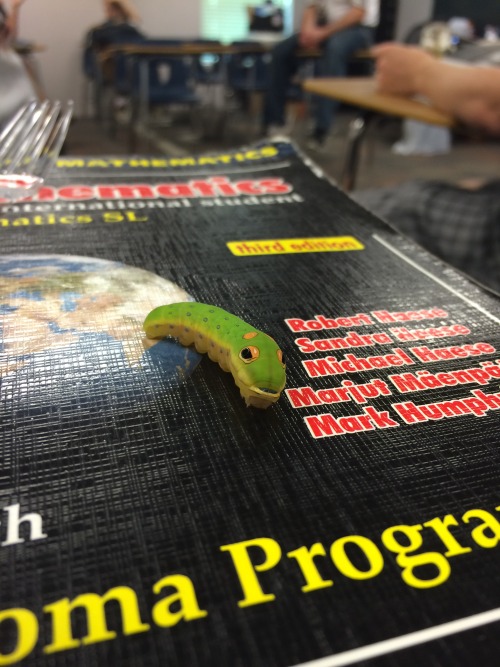

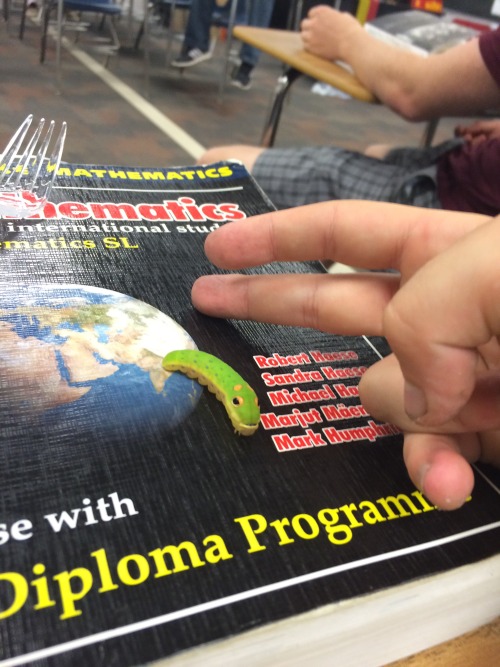
So I found this caterpillar on my way to class
We’re bros

hmmm
HEY ARTISTS!
Do you design a lot of characters living in not-modern eras and you’re tired of combing through google for the perfect outfit references? Well I got good news for you kiddo, this website has you covered! Originally @modmad made a post about it, but her link stopped working and I managed to fix it, so here’s a new post. Basically, this is a costume rental website for plays and stage shows and what not, they have outfits for several different decades from medieval to the 1980s. LOOK AT THIS SELECTION:

OPEN ANY CATEGORY AND OH LORDY–

There’s a lot of really specific stuff in here, I design a lot of 1930s characters for my ask blog and with more chapters on the way for the game it belongs to I’m gonna be designing more, and this website is going to be an invaluable reference. I hope this can be useful to my other fellow artists as well! :)
-
 javaclown liked this · 3 weeks ago
javaclown liked this · 3 weeks ago -
 ceeunever liked this · 2 months ago
ceeunever liked this · 2 months ago -
 dracomedicus liked this · 2 months ago
dracomedicus liked this · 2 months ago -
 lifeislove1000 liked this · 3 months ago
lifeislove1000 liked this · 3 months ago -
 owlgodsesquire reblogged this · 3 months ago
owlgodsesquire reblogged this · 3 months ago -
 dwdim5 liked this · 7 months ago
dwdim5 liked this · 7 months ago -
 galaload liked this · 1 year ago
galaload liked this · 1 year ago -
 a-little-harmed-shinra liked this · 1 year ago
a-little-harmed-shinra liked this · 1 year ago -
 morgvl liked this · 1 year ago
morgvl liked this · 1 year ago -
 c-guard liked this · 1 year ago
c-guard liked this · 1 year ago -
 akirainsanity liked this · 1 year ago
akirainsanity liked this · 1 year ago -
 virtua1toad liked this · 1 year ago
virtua1toad liked this · 1 year ago -
 mykl-1212 liked this · 1 year ago
mykl-1212 liked this · 1 year ago -
 camilladraymarch liked this · 1 year ago
camilladraymarch liked this · 1 year ago -
 misandrie liked this · 1 year ago
misandrie liked this · 1 year ago -
 nonexsistentnormal reblogged this · 1 year ago
nonexsistentnormal reblogged this · 1 year ago -
 nonexsistentnormal liked this · 1 year ago
nonexsistentnormal liked this · 1 year ago -
 agent-of-sam liked this · 2 years ago
agent-of-sam liked this · 2 years ago -
 indecentwarwlf liked this · 2 years ago
indecentwarwlf liked this · 2 years ago -
 lordrandreaming liked this · 2 years ago
lordrandreaming liked this · 2 years ago -
 mooplxnt liked this · 2 years ago
mooplxnt liked this · 2 years ago -
 adenofsnakes liked this · 3 years ago
adenofsnakes liked this · 3 years ago -
 nate-the-cannibalistic-oreo liked this · 3 years ago
nate-the-cannibalistic-oreo liked this · 3 years ago -
 petrklic liked this · 3 years ago
petrklic liked this · 3 years ago -
 hivvernal liked this · 3 years ago
hivvernal liked this · 3 years ago -
 detective-tartar liked this · 3 years ago
detective-tartar liked this · 3 years ago -
 lvl1krook liked this · 3 years ago
lvl1krook liked this · 3 years ago -
 no-starless-sky liked this · 3 years ago
no-starless-sky liked this · 3 years ago -
 cvetizla liked this · 3 years ago
cvetizla liked this · 3 years ago -
 jampocalypse liked this · 3 years ago
jampocalypse liked this · 3 years ago -
 rovinsyk liked this · 3 years ago
rovinsyk liked this · 3 years ago -
 roroorecmoo liked this · 3 years ago
roroorecmoo liked this · 3 years ago -
 msbidoof reblogged this · 3 years ago
msbidoof reblogged this · 3 years ago -
 spadoodler reblogged this · 3 years ago
spadoodler reblogged this · 3 years ago -
 vicsep7250 liked this · 3 years ago
vicsep7250 liked this · 3 years ago
